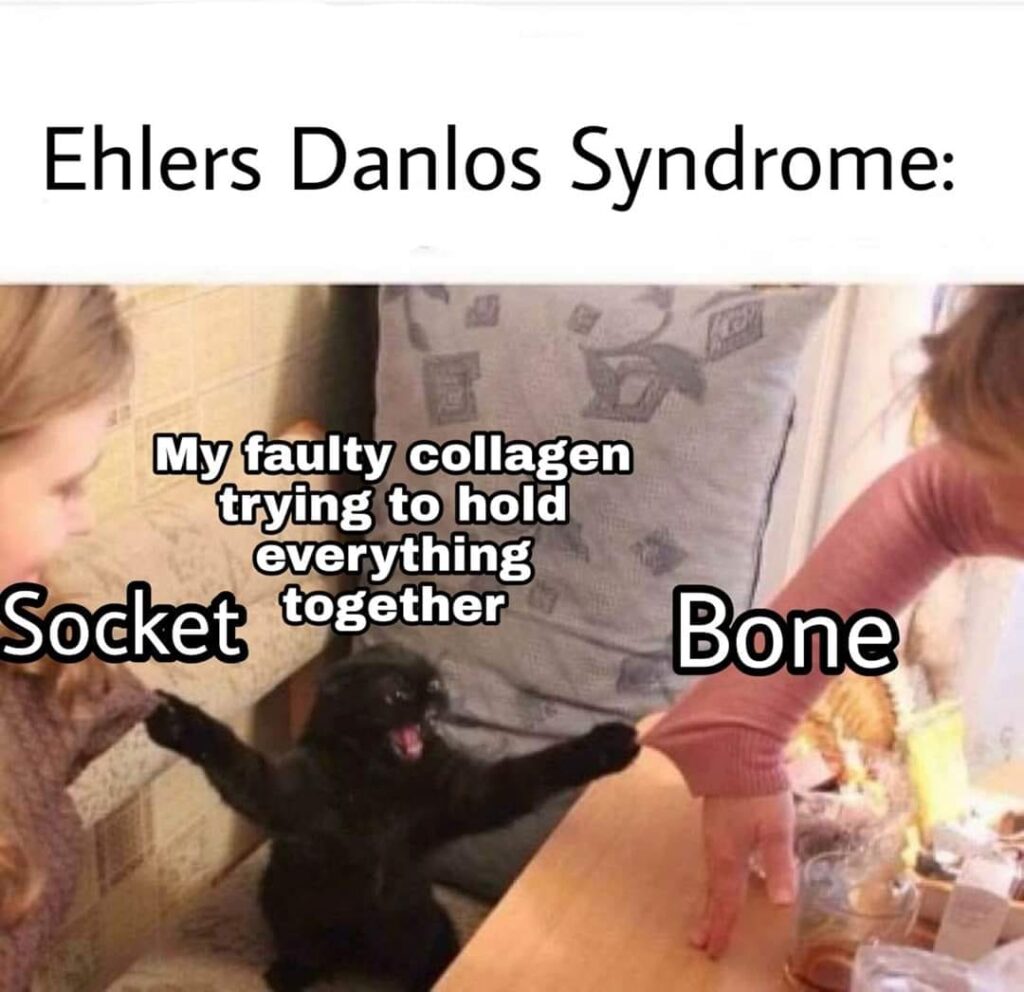Exercising for EDS and Hypermobility: Ways to Feel Safe with Movement
Hypermobility, EDS (Ehlers Danlos Syndrome) or hEDS (hypermobile Ehlers Danlos Syndrome) can all make exercising feel daunting. Experiencing pain, fatigue, dizziness, or fear around if you will hurt yourself can all be reasons that prevent you from exercising. The good news is that there are MANY different ways to exercise with EDS and hypermobility and I am here to help you find what will work best for you!
Before we dive into exercising for EDS and hypermobility, let’s learn a little bit more about what these are and why exercise is important if you have EDS or hypermobility.
What is EDS and Hypermobility?
EDS, or Ehlers Danlos Syndrome is a group of inherited conditions that affect the connective tissue of the body. EDS can impact people in many different ways and impact different body systems. There are 13 different types of EDS, the most common one being hypermobile EDS.
People with hEDS may have joint pain, larger ranges of motion in joints and/or joints that dislocate easily. Other symptoms such as fatigue, dizziness, digestive and urinary issues are also common.
There are many people who don’t have a diagnosis of EDS, or don’t fit all the criteria but are still hypermobile. These people may still experience joint pain, fatigue and larger ranges of motion in their joints and can use similar exercise treatment protocols as people with EDS.

Exercise Tips for EDS and Hypermobility:
Exercising with EDS or hypermobility can be safe and enjoyable, and there are many strategies to consider when choosing an exercise routine. First and foremost, it can be very beneficial to work with a physical therapist or kinesiologist with training in EDS and hypermobility to develop a tailored routine for you. If this is not an option, here are some other tips to get you started.
Strength Training
Strengthening muscles can be very beneficial for EDS and hypermobility. Strengthening the muscles around joints can prevent injury, reduce pain, and help with overall daily activities. My first tip would be to start slow. Choose strength exercises that you are already familiar with and enjoy. If you are new to strength training, start with lighter resistance options such as light resistance bands or small weights. Using machines at the gym can be beneficial as these machines often won’t move you through a full range of motion, whereas with weights you need to be controlling the range. Pilates can be another great option for people with EDS or hypermobility.
Pacing your training can be very beneficial. Start slow, and move within a range of motion and rep range that feels safe and comfortable, and does not flare you up. As you start to become stronger, you can slowly and gradually increase the reps, or increase the weights.
Stretching
Stretching can be tricky with EDS or hypermobility, as you already have a large range of motion that you don’t necessarily want to push into. However, stretching can feel nice on the joints and relieve pain temporarily. If you do decide to stretch, make sure you are staying within a normal range of motion and holding the stretches for a shorter duration.
Cardiovascular Exercise
Cardiovascular exercises are important for overall health as they help with heart health and endurance. It can be difficult to do cardiovascular exercises with EDS or hypermobility if you also have symptoms of pain, fatigue, and/or dizziness. If this is the case, it may feel better to do seated cardiovascular exercises such as a rowing machine or a bike. Elliptical machines and swimming or water running can be other options as they don’t put as much strain on your joints. When choosing cardiovascular exercises make sure you start slow and gradually increase your speed if your symptoms allow.
Finally, note that all movement is good movement. If all you can tolerate are gentle bed exercises to start or only a few minutes of movement at a time, that is a-okay! The body is resilient and the more you practice something, the easier it can become. Also remember that every day can be different and to not be too hard on yourself. If you have a high symptom day and need to do minimal movement, that is okay, listen to your body.
If you would like more guidance on exercise and live in British Columbia I am happy to help you with a physiotherapy appointment. You can book on this website or send me an email at audrianaphysio@gmail.com. If you live outside of BC I can help you with yoga. If yoga is something that interests you, send me an email!
My YouTube channel is also filled with exercise routines! Take a peak and see if any of the videos speak to you. https://www.youtube.com/@empoweredmovement/featured